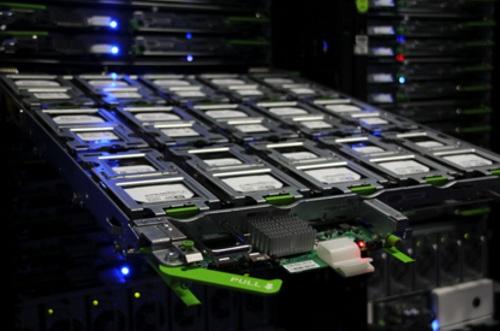Page 1
eetimes.com
Facebook Shares Storage Recipe
Blog gives look inside cold storage systems
SAN JOSE, Calif. — Facebook engineers shared new details of their recipe for creating massive storage systems at bargain basement prices. A blog posted Thursday (May 7) is the latest step in an ongoing trend of Web giants setting the design directions in cloud computing.
The blog gives deeper insights into how the social networking giant builds the so-called cold storage centers it now has running in Oregon, and North Carolina. It shared techniques for creating very redundant, low cost clusters of hard-drive arrays, many of which fly in the face of the practices of traditional drive array makers, but may only provide benefits for users operating on a massive scale.
Facebook is exploring even lower cost options using low-endurance flash and Blu-ray discs to store the two billion pictures shared daily on its Web site. It also is researching new ways to spread files across multiple data centers to improve durability.
Using four-terabyte hard drives, Facebook is packing two petabytes of storage in a single rack, using a quarter of the power of conventional storage servers. The cold-storage centers “are equipped with less than one-sixth of the power available to our traditional data centers, and, when fully loaded, can support up to one exabyte (1,000 petabytes) per data hall,” the blog said.
In typical Facebook fashion, cost savings came in part from stripping out unneeded hardware. For example, the storage rack is based on the Open Vault specification of the Facebook-led Open Compute Project with fewer fans (four instead of six) and power supplies (five down from seven). It also removed from the center redundant electrical systems, including uninterruptible power supplies and power generators.
The systems use commodity drives, presumably SATA I drives, as opposed to more expensive Serial Attached SCSI drives in most enterprise arrays.
Among other interesting hardware details, Facebook revised firmware in the drive controllers to ensure only one drive per tray could be powered up at a time. That put its own software in control of the duty cycle and power consumption. However it did have to buy better casters for its racks because the existing wheels broke down under the 1,100 kg weight of 480 four-terabyte drives.
Next page: Interesting optimizations in storage software

Facebook's controller firmware only powers up one drive per tray at a time.v |





